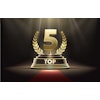
A recent shift in the U.S. government's position on mercury is rekindling the debate over the future of dental amalgam.
“The world's environmental leaders agreed that we must take immediate action to reduce mercury emissions.”
— Nancy Sutley, chair of the White
House Council on Environmental
Quality
While the Bush administration long opposed any legally binding measures on mercury, the Obama administration is taking a very different tack. A global crackdown on its use -- particularly in industrial applications -- was unanimously agreed upon at the United Nations Environment Programme's (UNEP) Governing Council Meeting in February in Nairobi, Kenya.
The governments of more than 140 countries, including the U.S., voted to begin developing an international treaty on the use and supply of mercury, according to a UNEP press release. They also agreed that the risks to human health and the environment are so significant that accelerated action under a voluntary Global Mercury Partnership is needed while the treaty is being finalized.
The treaty will include actions to reduce the supply of mercury and its use in products and industrial processes worldwide, according to the U.S. Department of State. Discussions will begin later this year, with a goal of finalizing the document by 2013.
"Mercury poses a serious threat to public health in communities around the world," said Nancy Sutley, chair of the White House Council on Environmental Quality, in a statement issued by the State Department last February. "The world's environmental leaders agreed that we must take immediate action to reduce mercury emissions. The United States will play a leading role in working with other nations to craft a global, legally binding agreement that will prevent the spread of mercury into the environment and improve the health of workers, pregnant women, and children throughout the world."
Impact on dentistry
So what might this treaty mean for the dental community? The U.S. Environmental Protection Agency (EPA) -- which estimates that dentists discharge approximately 3.7 tons of mercury each year to state and municipal wastewater treatment plants -- says it is too soon to tell. But given that the U.S. Congress last year passed the Mercury Export Ban Act (introduced by then Sen. Barack Obama), which outlaws exports of elemental mercury beginning in 2013, the storage and transport of mercury could become more restricted in the U.S. as well.
It could also have implications for the regulation of dental amalgam wastewater, said Rod Mackert, D.M.D., Ph.D., a professor of dental materials at the Medical College of Georgia School of Dentistry and a specialist in dental mercury issues -- although he doesn't think it should.
"I don't understand why there is such a focus on dental mercury or why dentistry is even considered in all this," he said in an interview with DrBicuspid.com. "When you look at the amount of dental mercury it contributes to the environment, you could eliminate all of it today and it would have no detectable effect on what is going out into the environment. Other sources, such as the burning of coal for electric power, are so much bigger."
While U.S. dental offices are the third largest users of mercury, consuming around 30 million tons of amalgam per year, of the 125 tons of mercury released into the air annually, the total amount coming from dental offices is about 1 ton, according to Dr. Mackert. And of the 8 tons released into water, dental offices account for only three-tenths of a ton. In addition, the ADA last year began recommending the use of amalgam separators in dental offices to further reduce emissions.
"Separators don't really change the amount of mercury going into the environment, but it is collected at an earlier stage, at the dental office rather than the waste treatment facilities," Dr. Mackert said. "This is going to be an important issue even for dentists who don't place amalgam fillings, because they will be taking them out."
|
Consumer groups ask Danaher to stop amalgam production Antimercury activists in the U.S. recently took their concerns directly to one of the biggest suppliers of mercury for dental amalgam: Danaher. On May 5, the Dominican Sisters of Hope, supported by Consumers for Dental Choice and the Mercury Policy Project, presented a resolution calling on Danaher to transition out of manufacturing mercury fillings at the company's annual shareholder meeting in Washington, DC. (The Dominican Sisters of Hope owns a block of Danaher stock.) According to a press release, Consumers for Dental Choice and the Mercury Policy Project armed themselves with proxies that would allow them to vote shares of stock at that meeting. While they did not expect to get a majority vote of shareholders in their favor, they said they wanted to put Danaher -- which owns Kerr, the largest producer of amalgam products -- "on notice." "The World Health Organization says no safe level of mercury exists," Michael Bender of the Mercury Policy Project said in the release. "The good news is that there are mercury-free alternatives that Kerr sells and that dentists are already using. Several countries have already banned its use, so why doesn't Kerr take a leadership role and stop polluting the planet with mercury?" The resolution was defeated, but not before receiving more than 43 million votes in its favor (16.49% of the overall vote), the groups announced after the meeting. Danaher did not respond to a request for comment. Kerr declined to comment. |
In fact, while amalgam remains an important dental restoration material in many parts of the world, especially among poorer populations, its use is declining in favor of composites. And some countries, such as Sweden, Norway, and Denmark, have banned its use in dentistry altogether. Given the Obama administration's position on mercury, will the U.S. follow suit?
Probably not.
Although the U.S. FDA must reclassify dental amalgam by July as part of a settlement last year between the agency and the consumer group Moms Against Mercury, an outright ban is unlikely. The ADA remains steadfast in its position that amalgam is "a valuable, viable, and safe choice for dental patients," concluding in comments to the FDA last year that "the current evidence does not support a link between dental amalgam and systemic diseases or risks to children, pregnant women, or developing fetuses."
Similarly, in May 2008, a scientific committee of the European Commission addressed safety concerns for patients and professionals regarding the use of alternative restorative materials and concluded that dental amalgams are effective and safe, both for patients and dental personnel.
"It's mystifying that people persist in saying there is cause for concern with amalgam fillings when there's no evidence that they cause adverse health effects," Dr. Mackert said. He maintains that the dosage is so small a person would need between 265 and 310 amalgam fillings before even slight symptoms of mercury toxicity could be felt.
Still, a report issued last June by J.P. Morgan concluded that "We do not believe that FDA will ban mercury fillings altogether, but it will likely restrict use in vulnerable populations. We do believe that the agency will ask for the label to indicate that mercury is an ingredient in the filling, and that special populations should be exempt from such fillings, such as nursing women, pregnant women, young children, and immunocompromised individuals."
An outright ban of dental amalgam could have economic ramifications as well. A 2007 article on the economic impact of regulating amalgam restorations in the U.S. found that "If amalgam restorations are banned for the entire population, the average price of restorations before 2005 and after the ban would increase $52 from $278 to $330, and total expenditures for restorations would increase from $46.2 billion to $49.7 billion. As the price of restorations increases, there would be 15,444,021 fewer restorations inserted per year. The estimated first-year impact of banning dental amalgams in the entire population is an increase in expenditures of $8.2 billion" (Public Health Reports, September/October 2007, Vol. 122:5, pp. 657-63). An amalgam ban would have substantial short- and long-term impact on increasing expenditures for dental care, decreasing utilization, and increasing untreated disease, the authors concluded.
In the long run, Dr. Mackert thinks the debate over dental mercury will eventually become moot as dental amalgam becomes increasingly displaced by other alternatives.
"Amalgam is less expensive to put in and less expensive over the life of the restoration because it lasts longer," he said. "The white fillings are more aesthetic, which is why patients prefer them, even in the back teeth. I think this has been the main thing driving the preference [for composites], although likely the concern over mercury has had some effect as well. But I think it [amalgam] will probably become obsolete."
Carlheinz Swaczyna was a general dentist in Krefeld, Germany, for 30 years before retiring in 2007. He writes regularly for the weekly German dental publication, DZW - Die Zahnarztwoche.
Copyright © 2009 DrBicuspid.com



















